 Last Stage |
All around Delhi 35.7 mi (57.4 km) |
 Next Day |
Sabhī kō namaste!
After parting with Mom in Bangkok, my adventure around the globe continued! I’d filled out what felt like a college application, giving evidence that I’d been tested for COVID, knew how to convert a 5-megabyte JPG to a 1.6-megabyte PDF, and had absolutely no connection to Pakistan. I’d watched hours of videos on how to properly tie a turban or pagari, but they’d all required human-sized foreheads to tie properly! So, on a wing, a prayer, and some improvised haberdashery, this beaver successfully passed through customs to enter the subcontinent of India!
I’d signed up for a 5-day tour of the Golden Triangle with Crystal India Holidays, beginning in the capital city of Delhi and destined for Agra and Jaipur. Along the way, I planned to see my 6th Wonder of the World, and as luck would have it, the record-shattering heatwave and choking smog meant no one else signed up for the tour with me! That meant I’d get a private tour experience with the expert driving skills of Mr. Annu and the great knowledge of Mr. Nitin who met us as we pulled up to our first stop: Qutb Minar, India’s tallest stone tower and a UNESCO World Heritage Site!
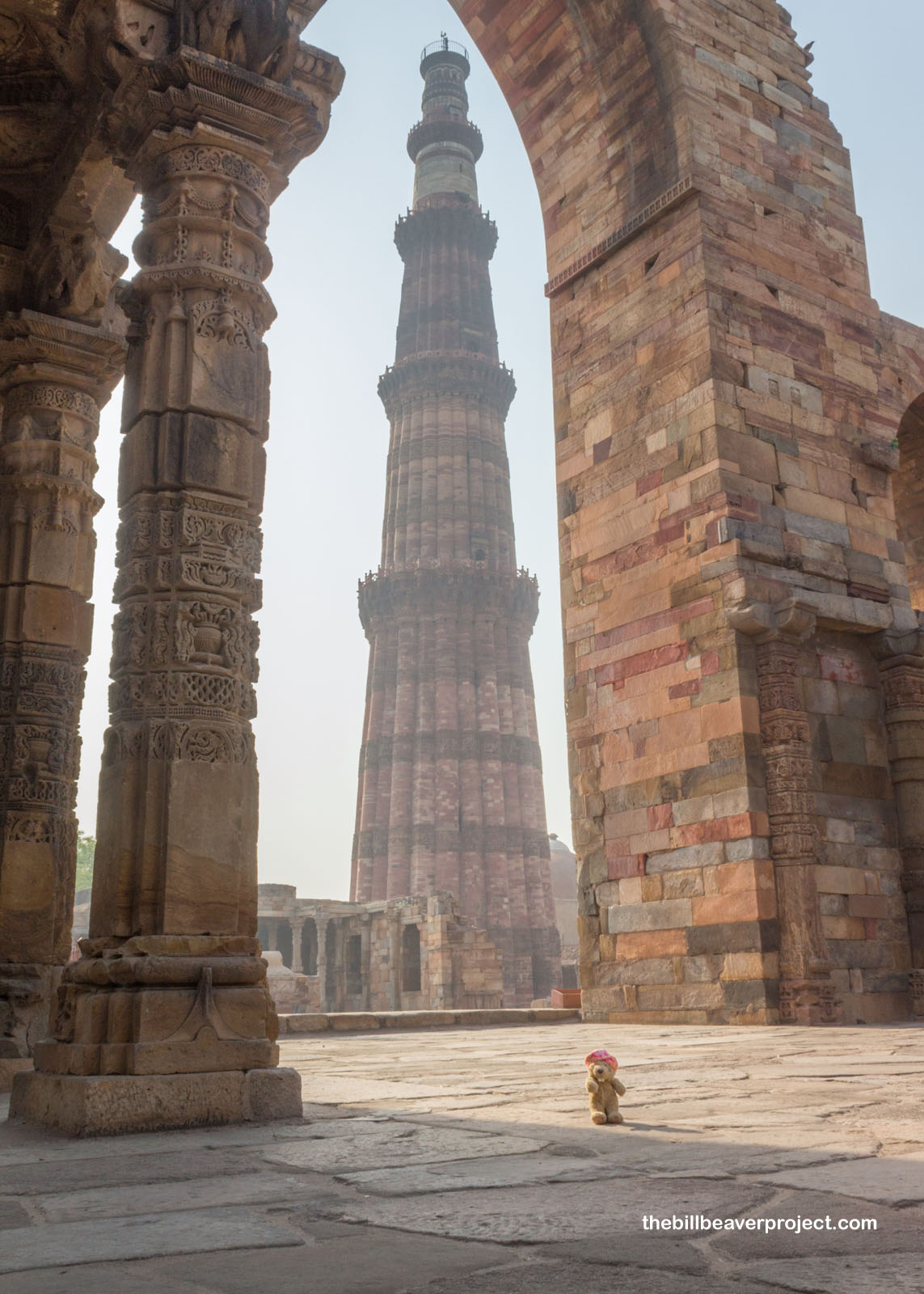 |
As early as 1173 AD, the Ghurid sultan, Mu’izz ad-Din Muhammad Ghori, set out from modern Afghanistan to conquer up an Islamic caliphate in northwestern India. With him came thousands of Turkic slaves called Mamluks, among them one named Qutb al-Din Aibak, who actually became sultan of Delhi after his boss was assassinated in 1206! Before that day came, he started work on this victory monument in the heart of the conquered citadel, Lal Kot, at the heart of Dhillika, now Delhi.
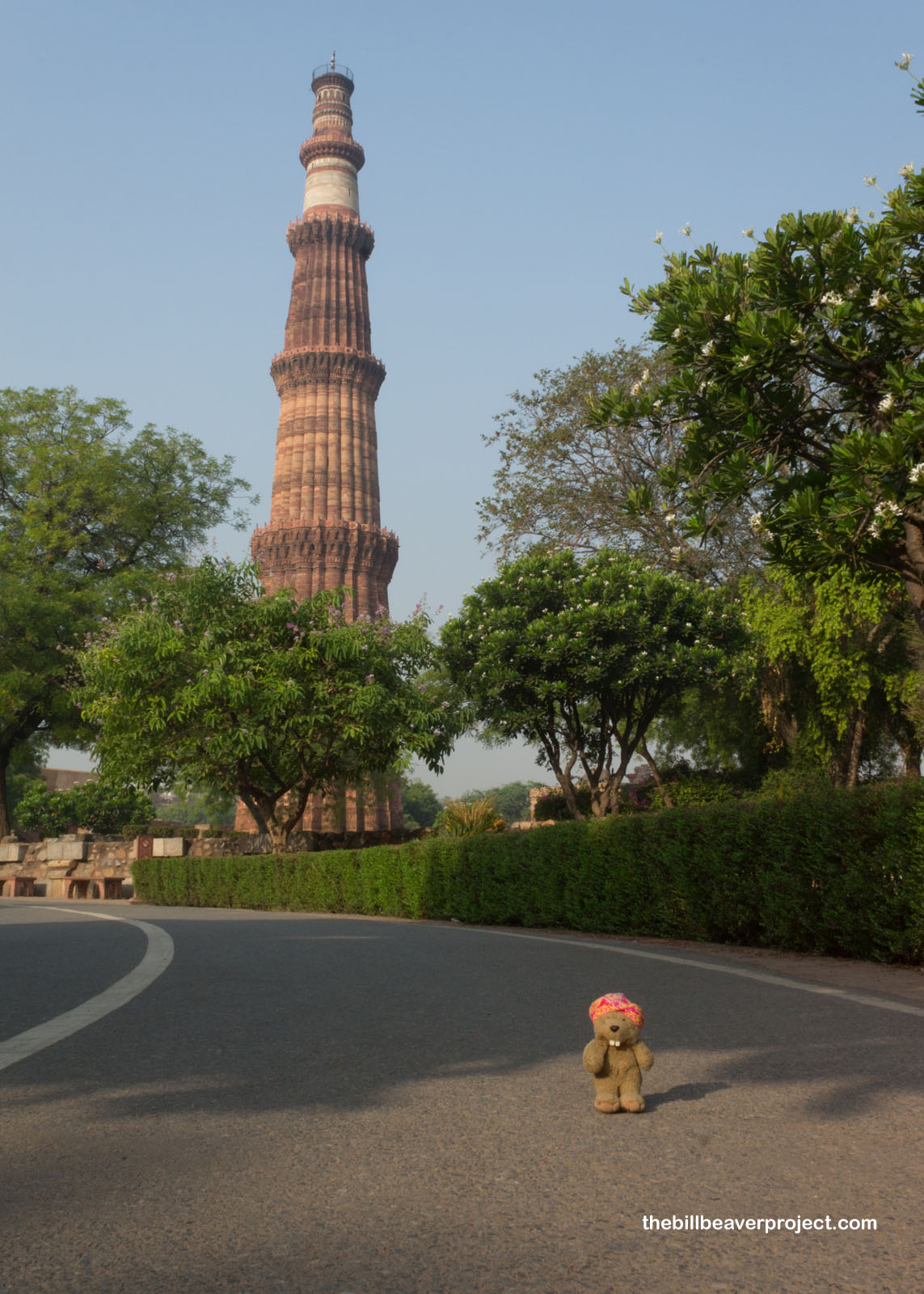 |
The first Mamluk sultan completed one level of this tower during his lifetime, though he kept his headquarters in Lahore (now modern Pakistan). His successor, Shams ud-Din Iltutmish, completed three more stories by 1220 AD and made Delhi his home! His tomb is still here, decorated with a unique blend of verses from the Quran and the lotuses, wheels, and bells of the Hindu builders!
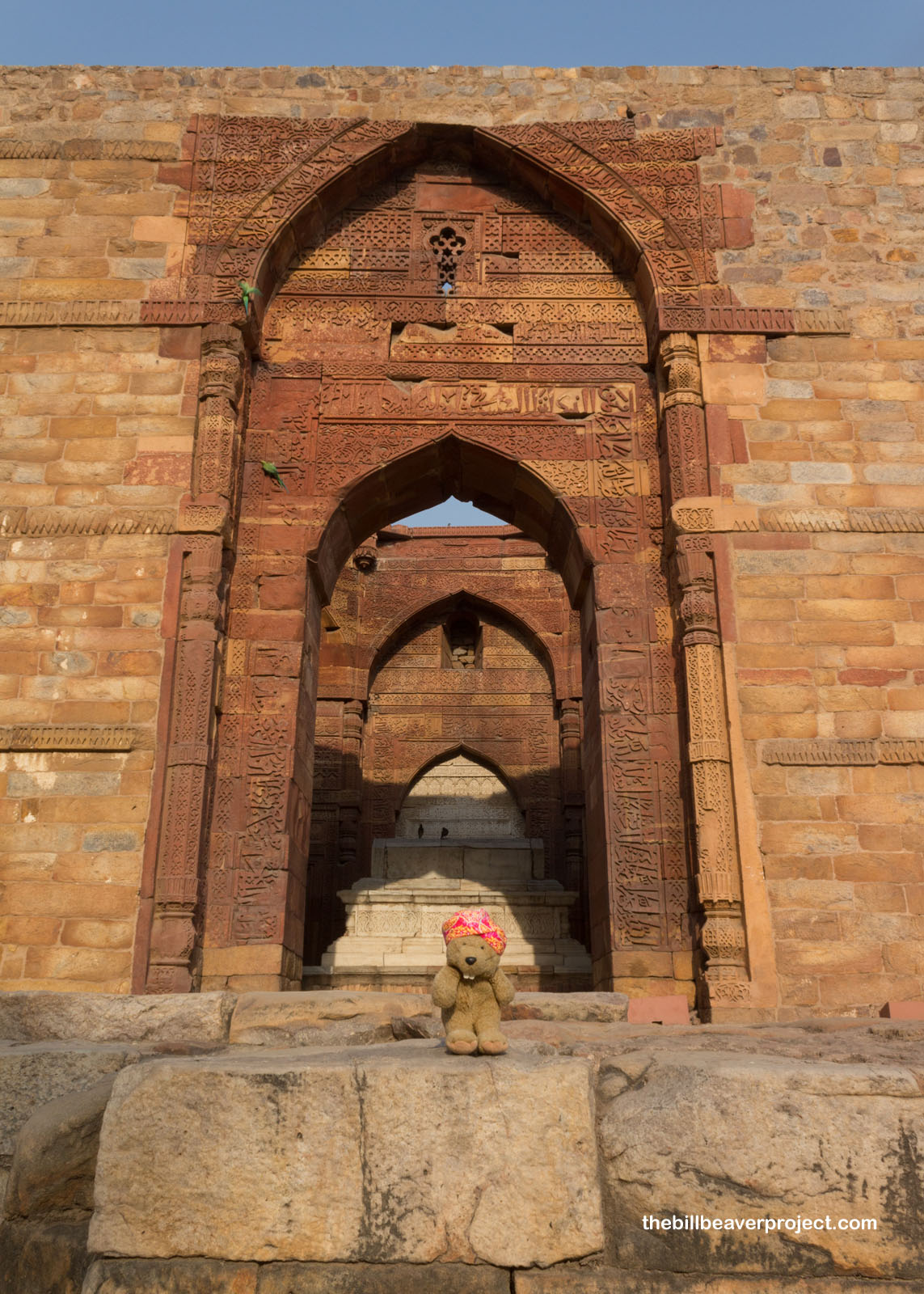 |
Not all of this cultural crossover was an artistic choice! This complex was built as a victory monument over an old temple to Shiva and repurposed stone from 27 Jain and Hindu temples to build it! The faces of the Hindu gods were chiseled off of the pillars because the Islamic faith says neither humans nor animals can be depicted in art! Like Confederate monuments in the States, there’s controversy surrounding Islamic monuments in northwestern India. In fact, just four days before I got here, there was a protest to change the name of Qutb Minar to Vishnu Stambh!
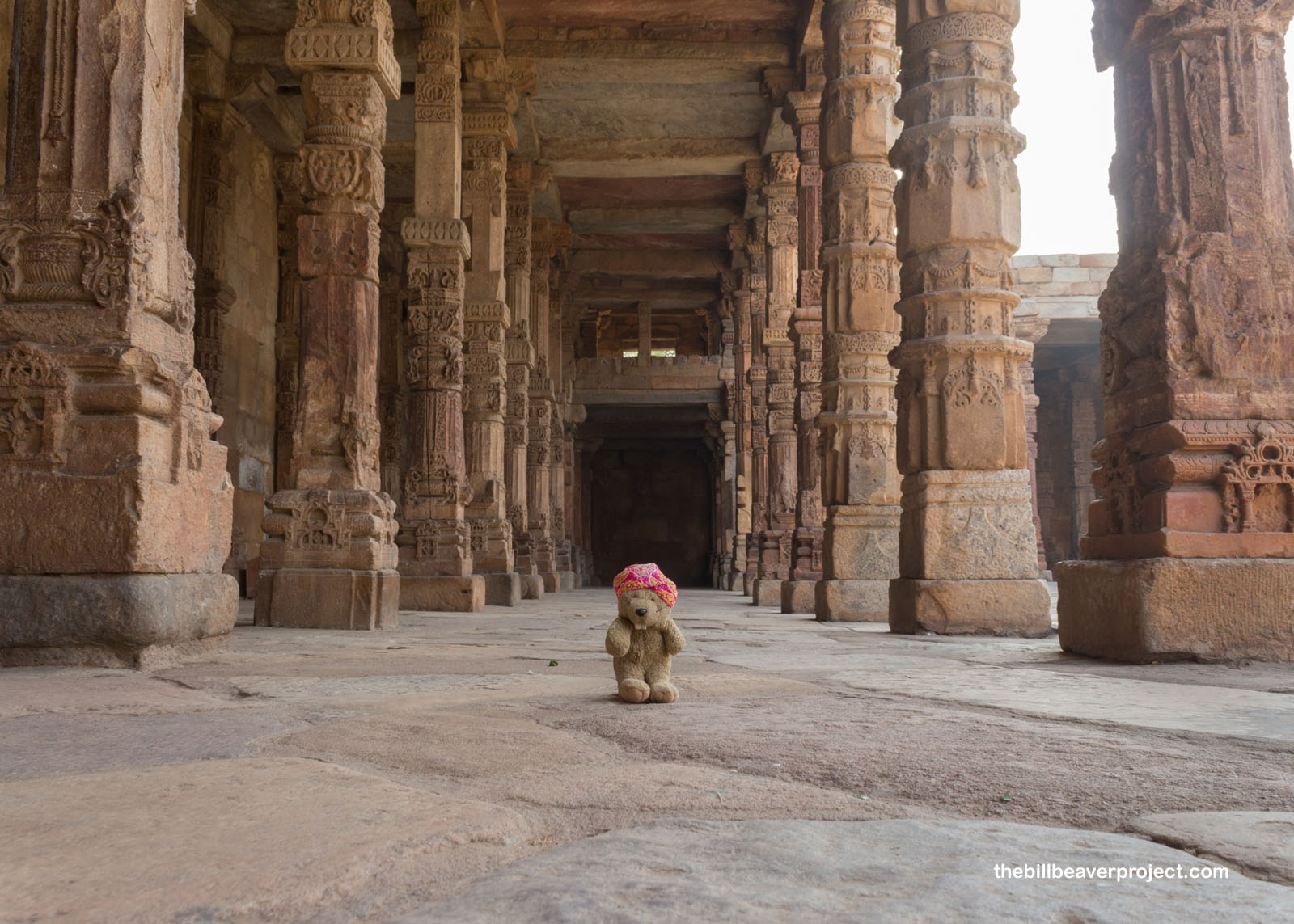 |
Mr. Nitin made sure to point out the Persian-style arches with their pointed apexes and calligraphy inscriptions, and also the 23-foot, 6-inch iron pillar that was brought here by Sultan Iltutmish after he conquered Malwa! It should be called the Ironic Pillar, because its well preserved inscriptions show that it was originally a victory monument for a Hindu king, Chandragupta II! Thanks to a protective film, this iron pillar has not rusted or otherwise corroded in over 1600 years!
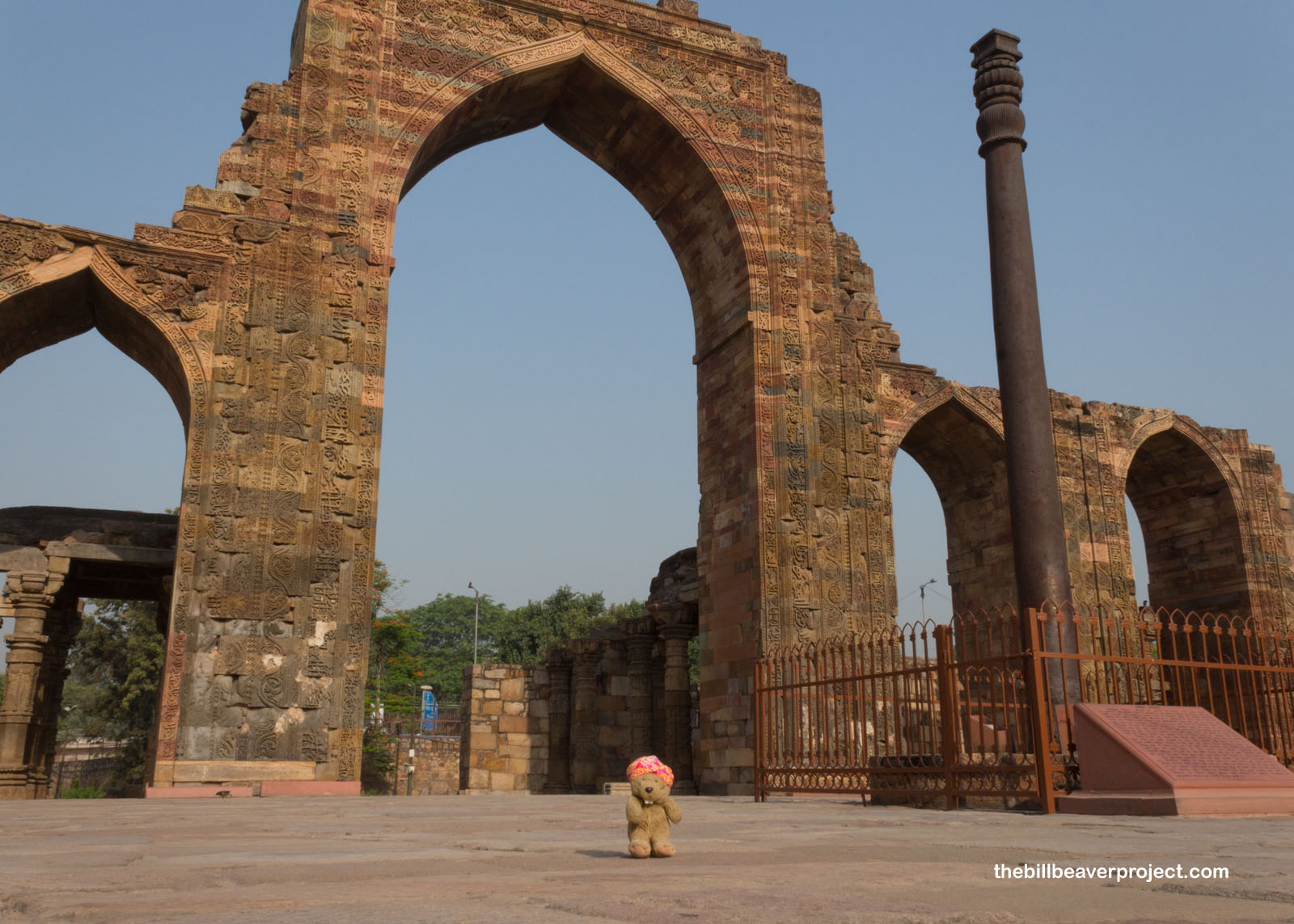 |
After making a circuit of the Qutb Complex, we were off to our next stop: the Lotus Temple! Only dating back to 1986, this unique temple was designed by Fariborz Sahba and built for the Baháʼí faith, whose main goal is the unity of all humanity! With this purpose in mind, the Lotus Temple is open to all faiths, so long as you take off your shoes before entering and stay completely silent inside.
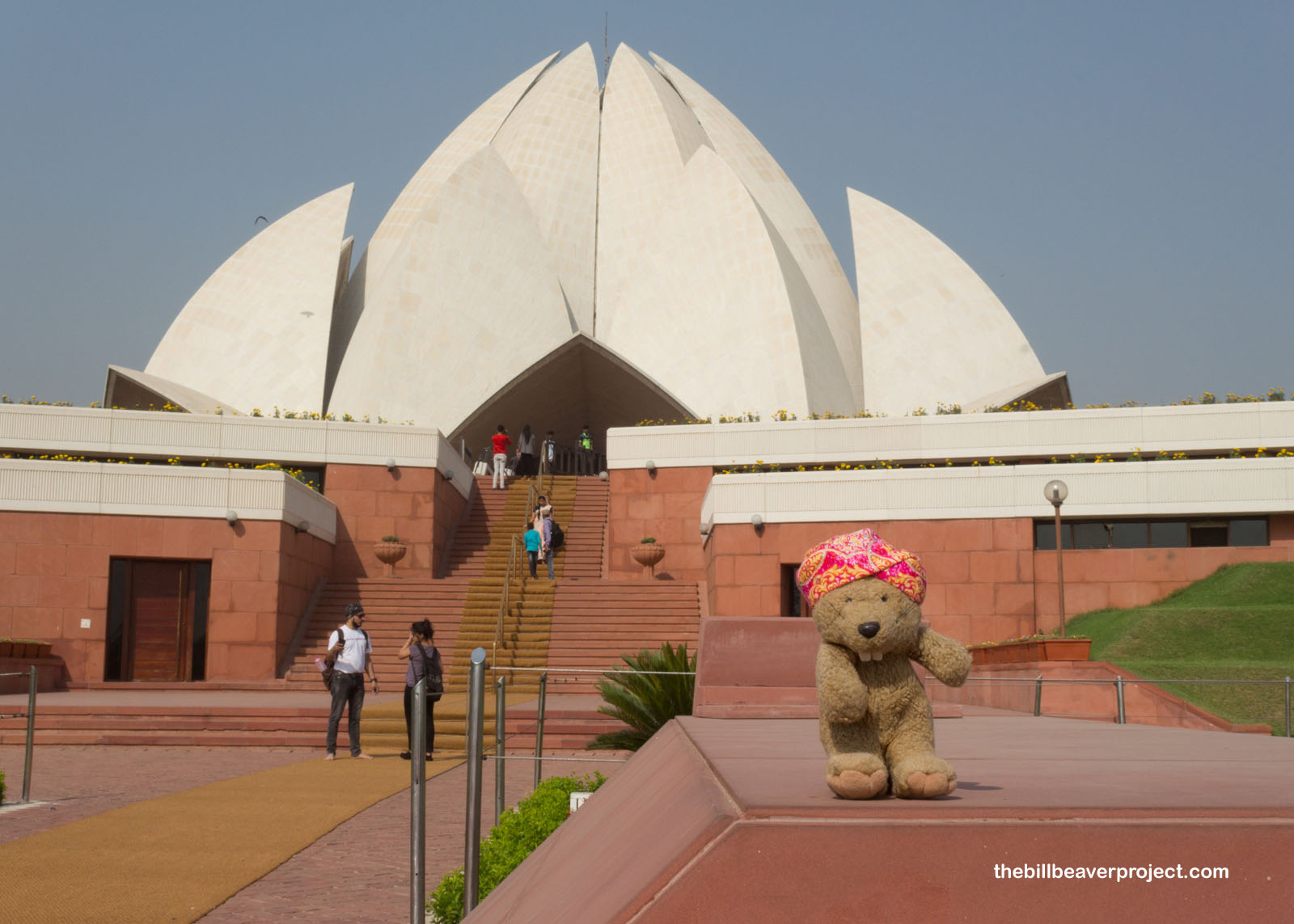 |
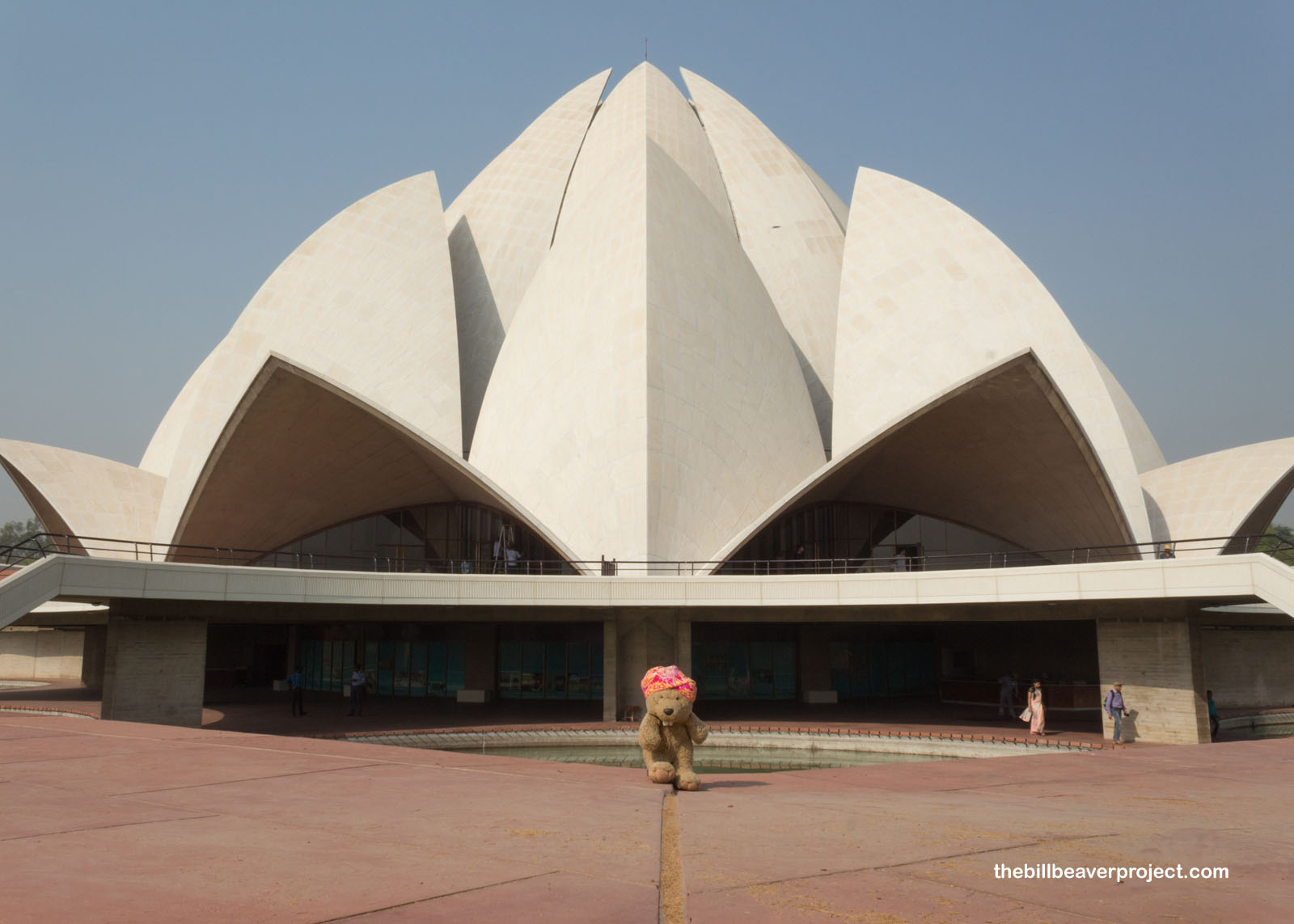 |
After a brief swelter in the vast quiet of the Lotus Temple, we were off to our next stop, Humayun’s Tomb. Humayun was the second emperor of the Mughal Empire, which gained power in 1526 (Mamluk, Khalji, Tughlaq, Sayyid, Lodi, Mughal)! The Mughals were of Turkish and Mongolian descent, whose ancestors were Timur (Tamerlane) and Genghis Khan! Like the Mamluk slave-kings, Humayun also had an atypical reign! Routinely betrayed by his brothers, he was exiled from India for 15 years after losing the Battle of Kannauj to Sher Shah Suri on May 17, 1540.
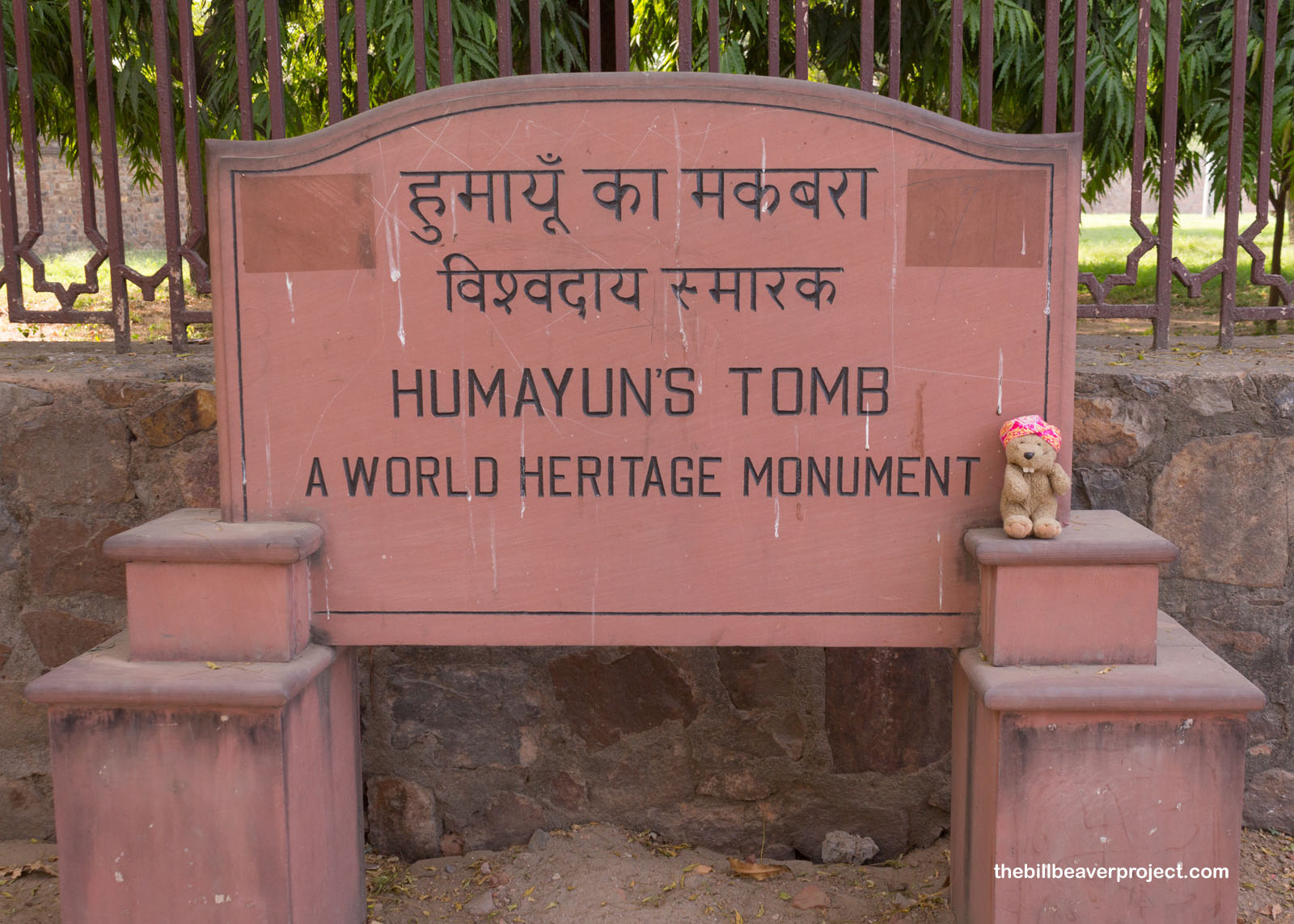 |
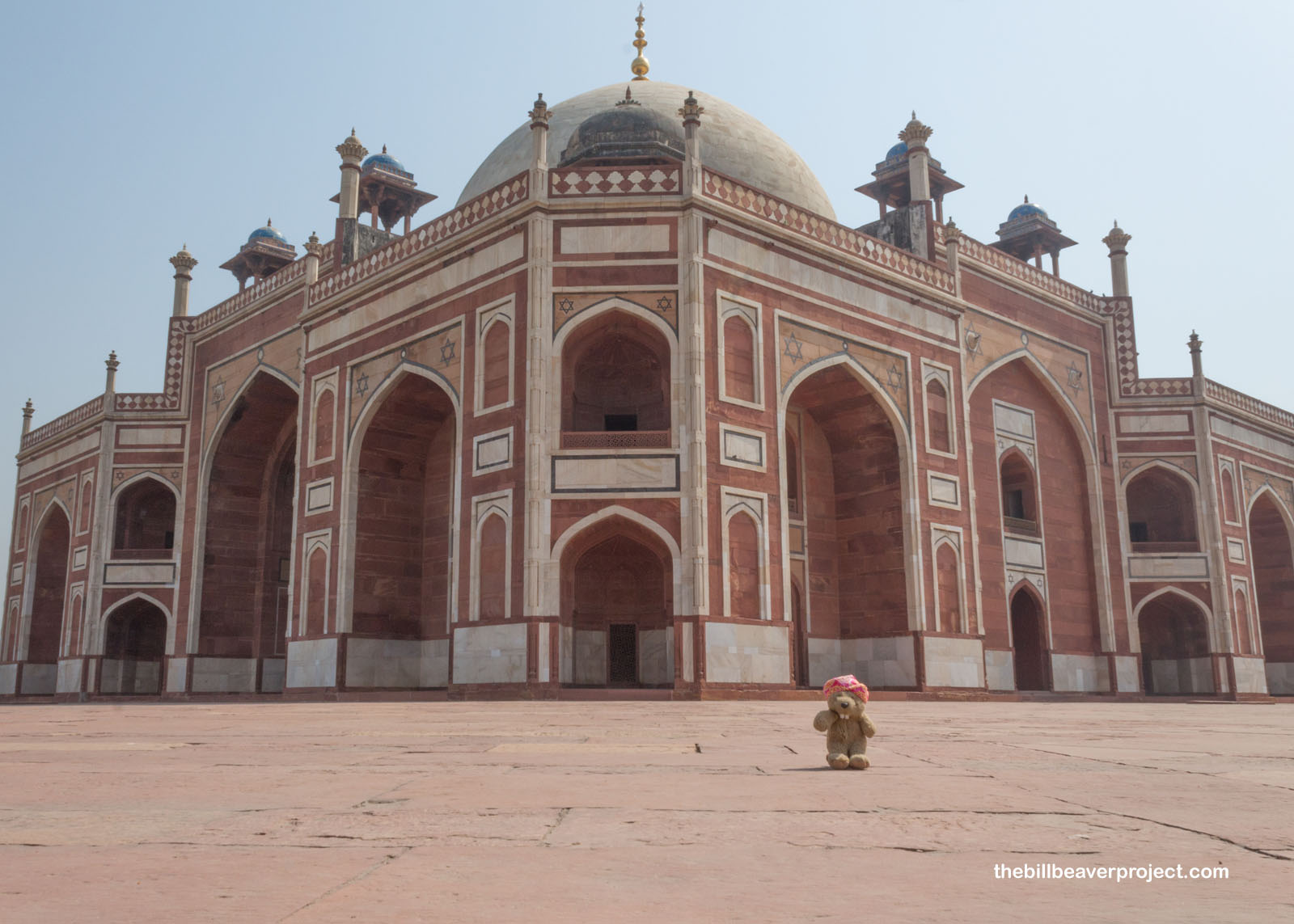 |
During his exile in Persia, Humayun absorbed all kinds of artistic and architectural influences that he brought back to India with him, winning back his throne in the Battle of Sirhind on June 22, 1555! But Humayun only lived for six months after reclaiming his Indian territories, slipping on his library staircase and hitting his head! His first wife, Empress Bega Begum, commissioned this first garden tomb on the Indian subcontinent, designed by Mirak Mirza Ghiyas and his son, Sayyid Muhammad! Perfectly symmetrical, it was surrounded by fountains symbolizing the four rivers of water, wine, milk, and honey and a garden that, today, was a haven for birds like the black kite, which kept eyeing me hungrily and got me thinking I didn’t want this to be my tomb too!
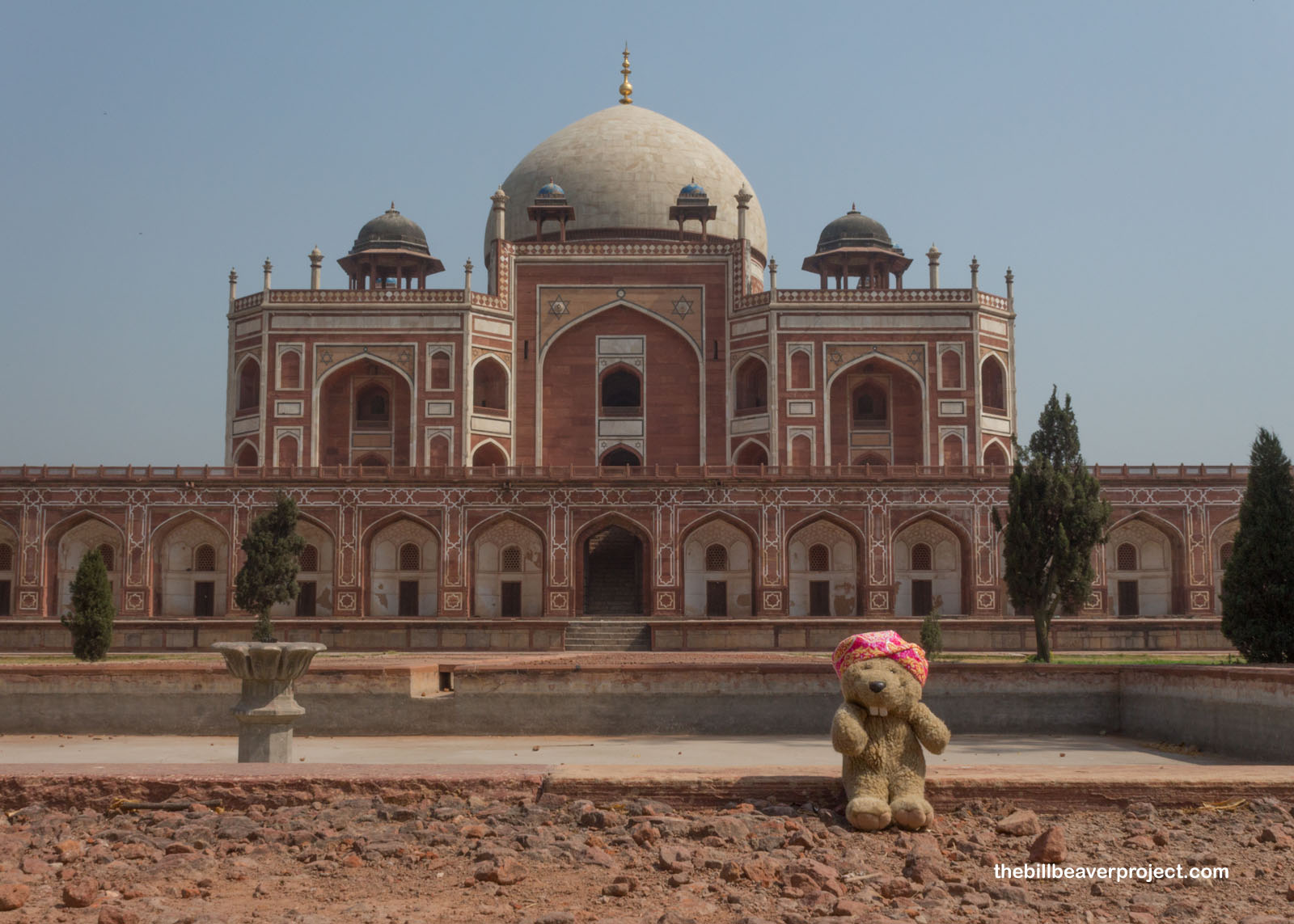 |
Humayun’s Tomb shares ground with the tomb of Isa Khan, who was ironically a noble in the court of Humayun’s rival, Sher Shah Sur! That could have been because this octagonal tomb also doubled as a mosque and had an entire town built around it until the early 20th Century!
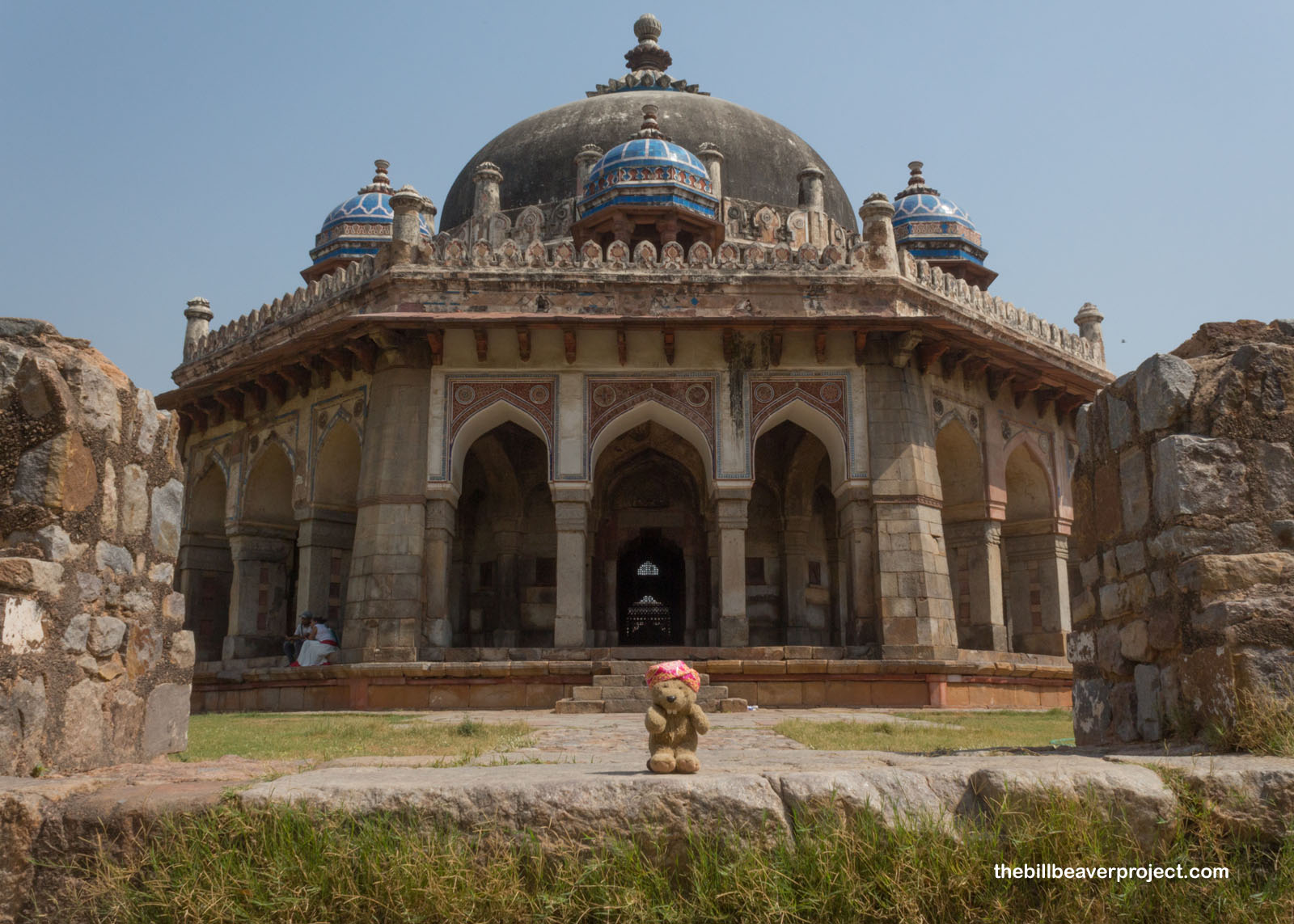 |
As the sun started to turn sweltering, we moved along to a very different kind of tomb, the Raj Ghat, where many of Mohandas Gandhi’s ashes were sent adrift in the Yamuna River in 1948. Thanks to Mr. Gandhi’s nonviolent organizing, India won its independence on August 15, 1947, but because of Gandhi’s support for the separate nation of Pakistan, he was assassinated the following year. There is a monument here with an eternal flame, but it felt close enough to a standard gravesite for me to take photos of it.
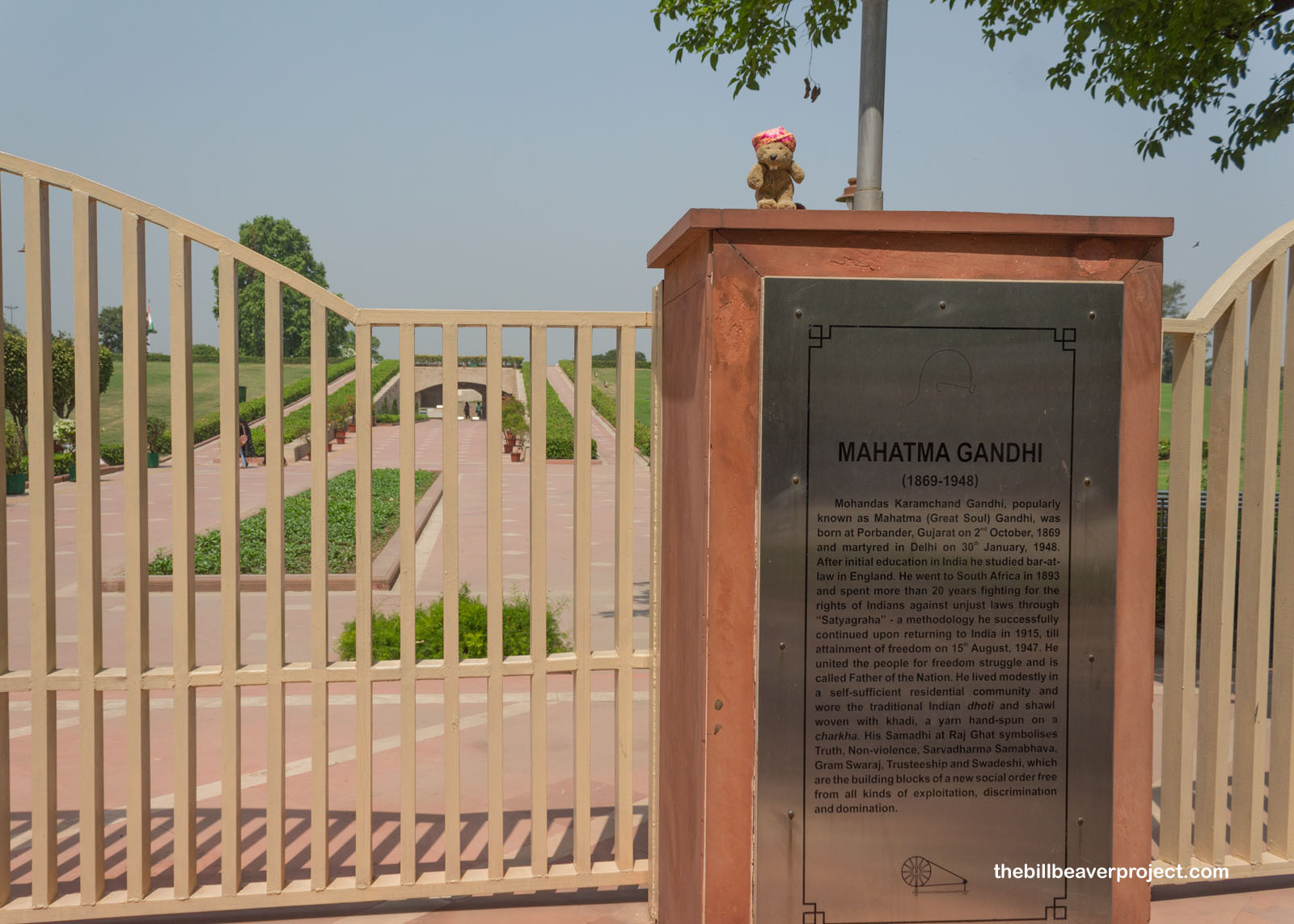 |
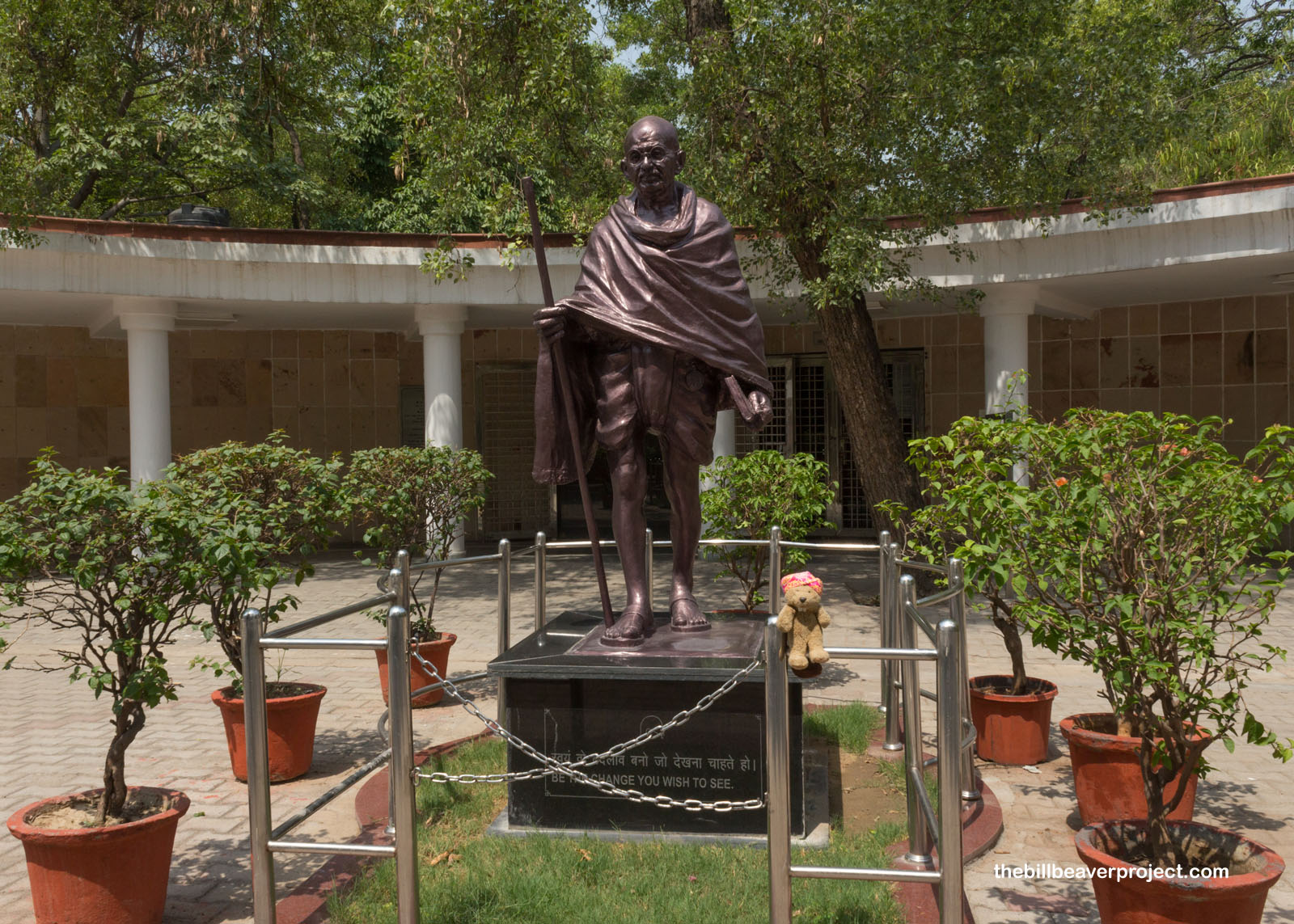 |
Next, Mr. Nitin sent me to wander the Jama Masjid, built under Mughal Emperor Shah Jahan between 1650 and 1656. I’ll have more to say about Shah Jahan when I get to Agra, but when this masjid was built, Delhi was known as Shahjahanabad! During British rule, this mosque, which had been taken over as a barracks before being returned in 1862, became a place to organize action against colonial rule, much the way Black folks in the USA organized in churches! It was also a rare spot where Muslims and Hindus could meet together in solidarity!
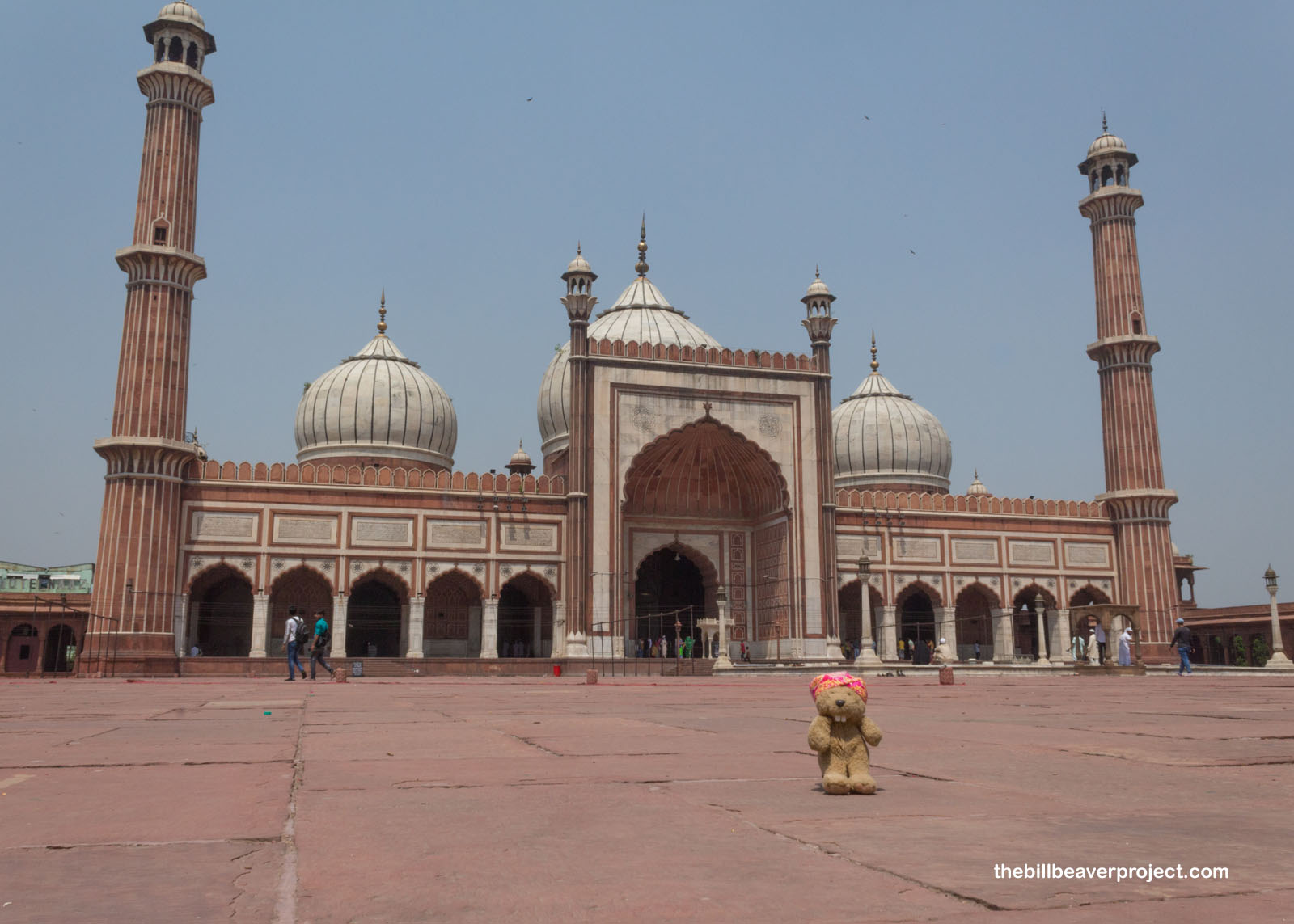 |
Because of construction, we couldn’t get close to either the famous India Gate or the presidential palace, the Rashtrapati Bhavan, so I did my best while Mr. Annu drove around the block and Mr. Nitin showed me how to properly cross a street in Delhi, which were super chaotic! We skipped the Red Fort because Mr. Nitin said it was aggressively touristy and went instead to the Gurudwara Bangla Sahib, one of the largest Sikh gurdwaras in Delhi! Photos weren’t allowed there, but we got to see the healing pond, Sarovar, a musical scripture reading, and the langar kitchen, where volunteers will feed anyone who comes to the kitchen 24 hours a day, seven days a week! Serving rice, lentils, veggies, and chapati bread, this kitchen can feed up to 80,000 visitors a day! The only rule is you must eat what you’re given; no leftovers!
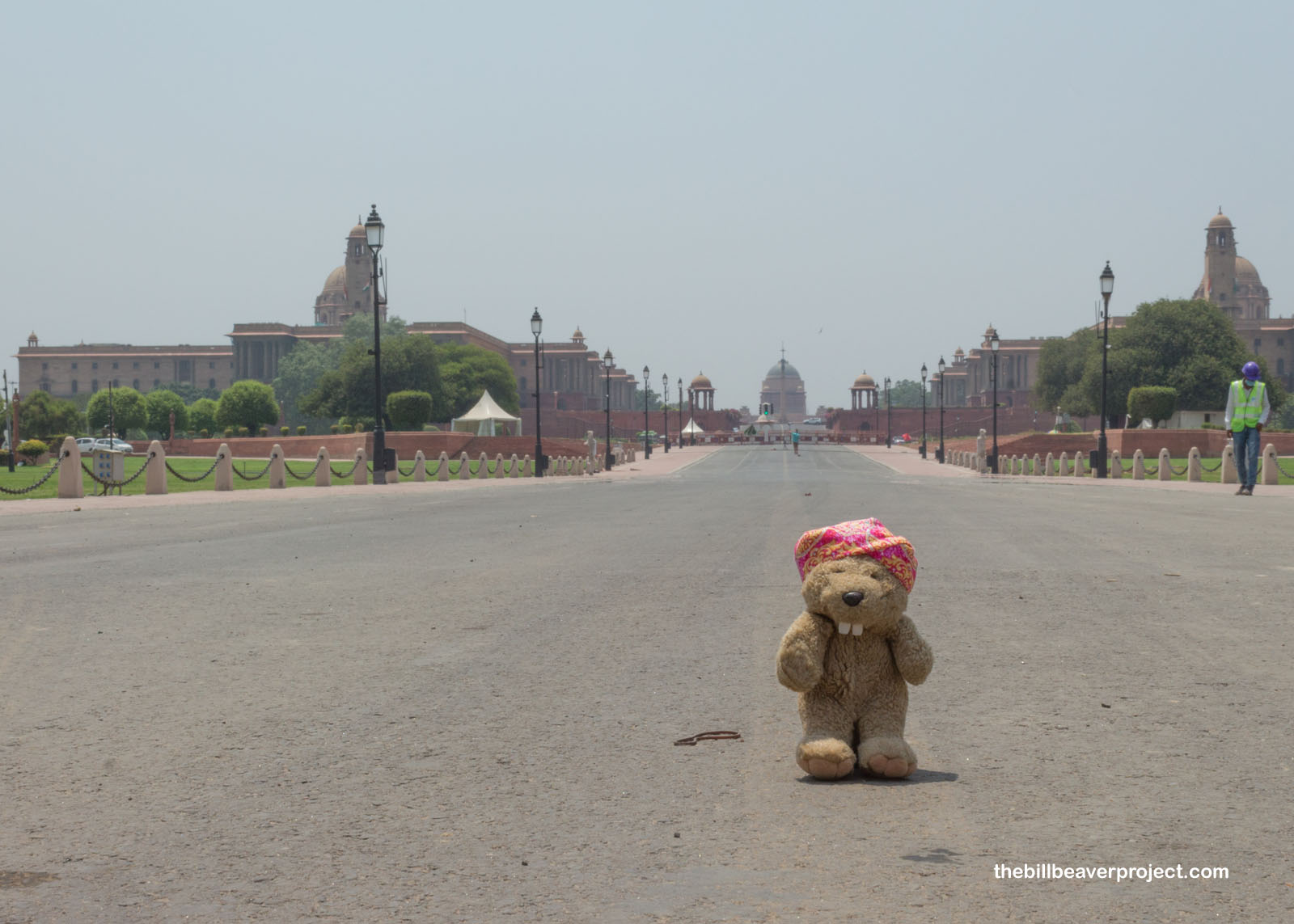 |
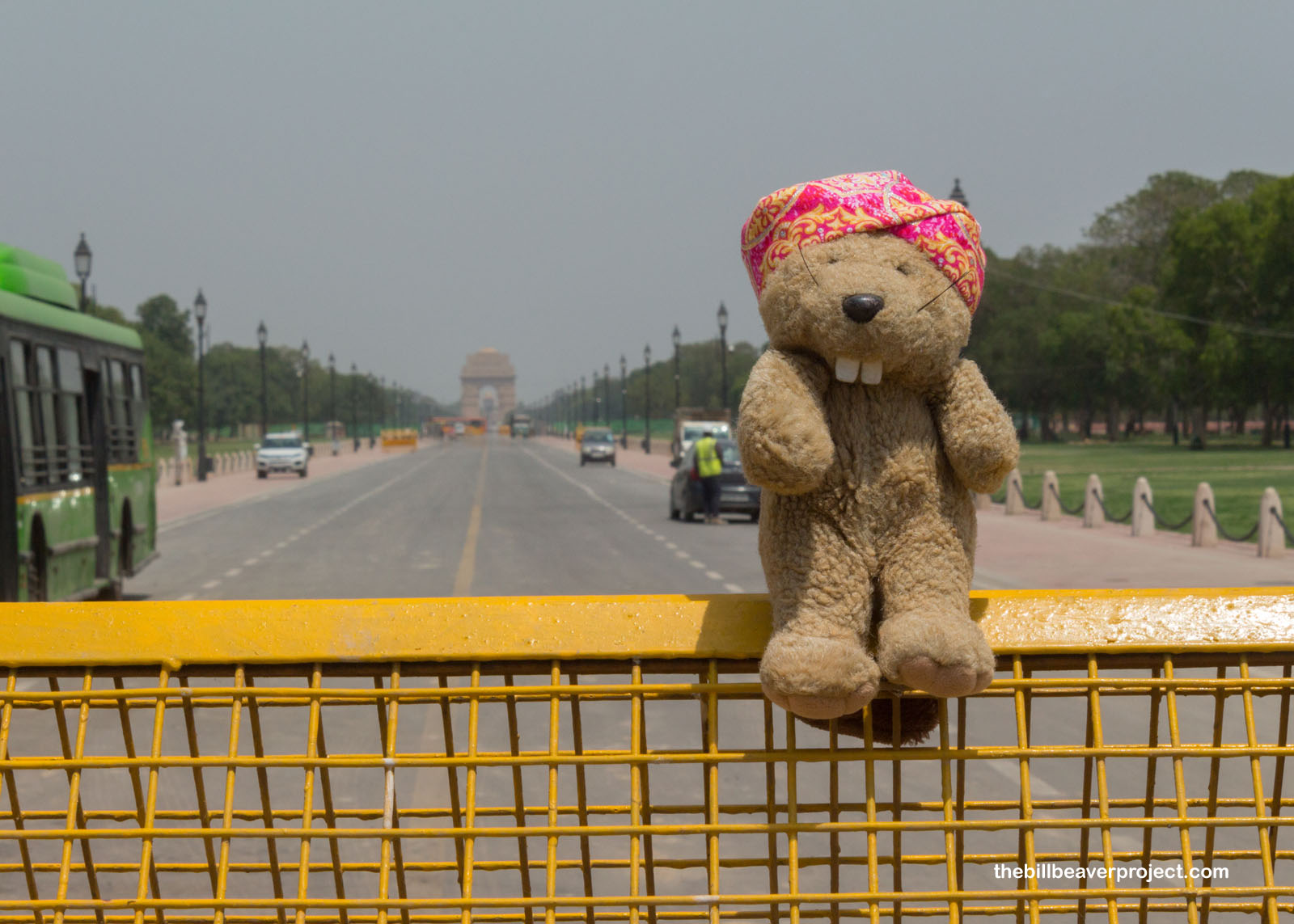 |
While we didn’t eat at the gurdwara, Mr. Nitin dropped me at the Pindi restaurant, and then suddenly, right after lunch, the tour was over! I was super surprised to get dropped off back at the Aloft New Delhi Aerocity by 3:00 PM, glad because it meant getting out of the scorching heat, but also, because of security, I felt kind of trapped inside. It was intimidating to hail a ride share, and I wasn’t sure where else I would go from here, so I settled in for a dinner buffet and went through my day’s photos.
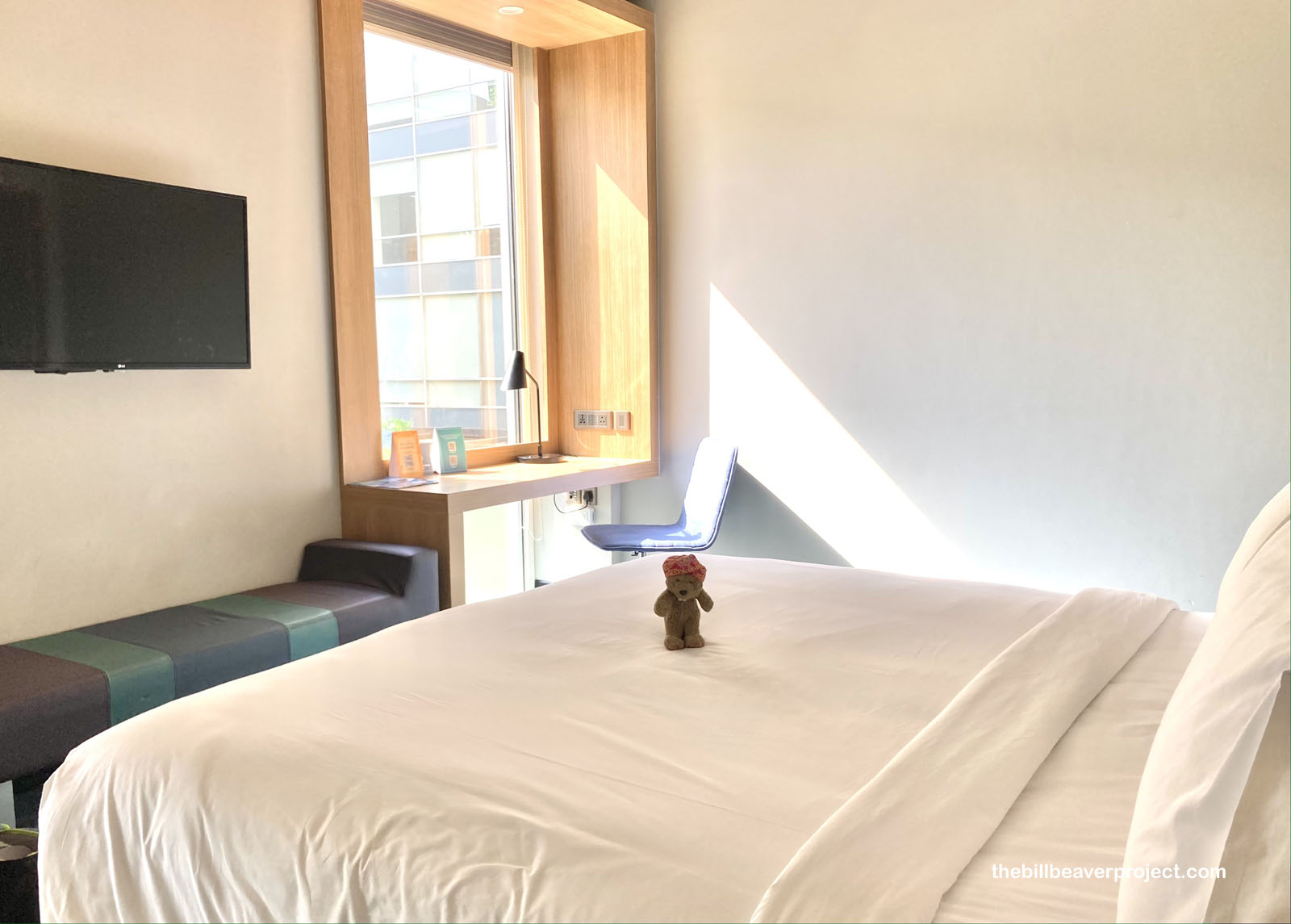 |
Tomorrow will be a long drive to Agra, so I may as well rest up. There are Wonders of the World to witness!
Kal milate hain!

 Last Stage |
Total Ground Covered: 410.9 mi (661.2 km)* *Just driving! Doesn’t include flights. |
 Next Day |
